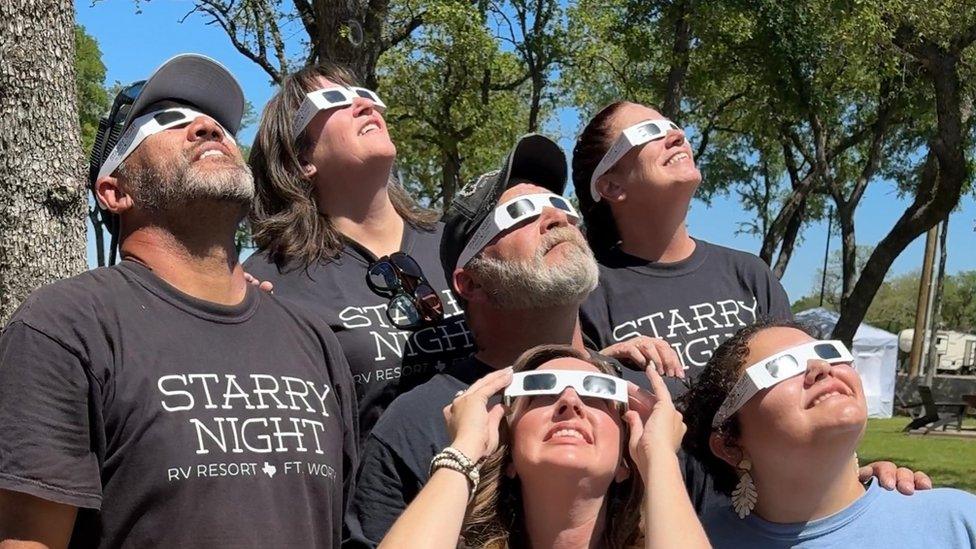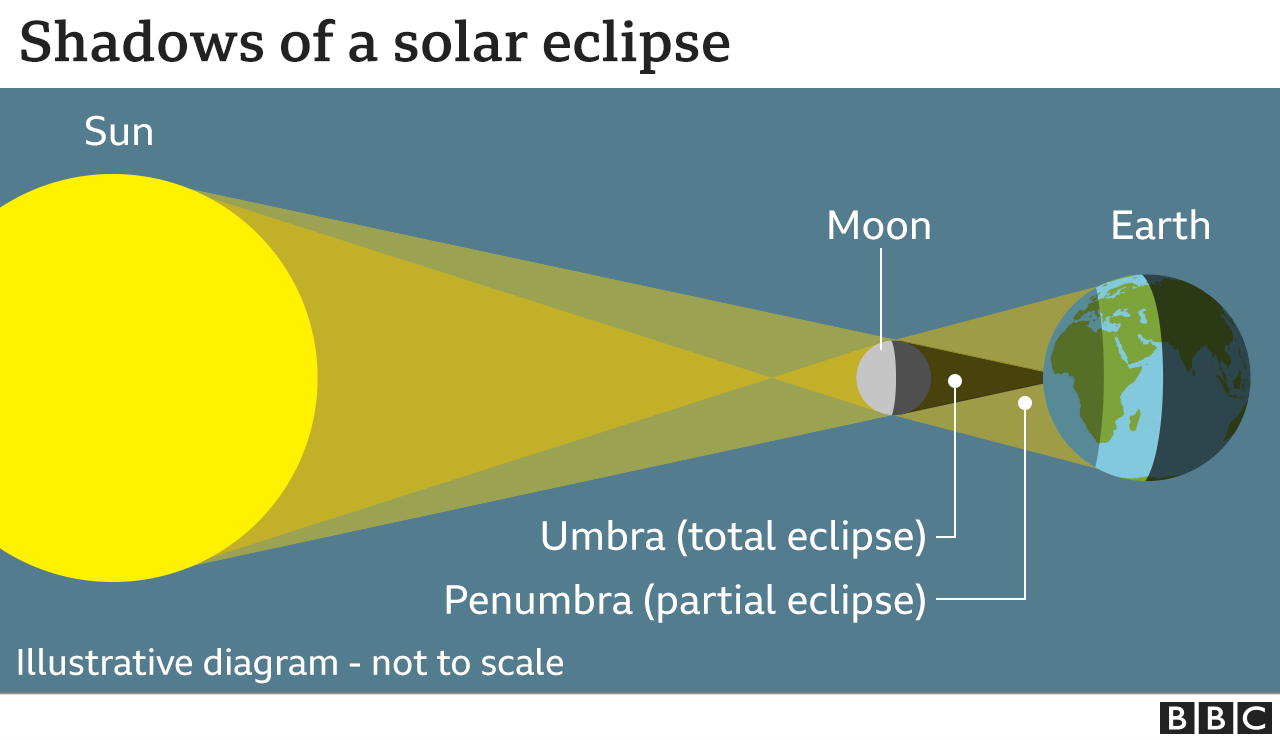Sky watchers hope for clear weather for N America solar eclipse
- Published

Sky watchers test their eclipse glasses in Texas
Millions are hoping for clear skies as anticipation grows ahead of Monday's total solar eclipse.
Forecasters are predicting cloudy conditions in northern Mexico, Texas and parts of the Great Lakes region.
Better weather is expected in western Mexico and parts of the US Midwest, with clear spring skies likely in New England and Canada.
The total solar eclipse, the first to cross the continent since 2017, will first hit land on Mexico's west coast.
It will track north-east across heavily populated areas and several major cities in three countries.
What will the weather be for the solar eclipse?
Some areas along the path of totality - where the moon totally obscures the sun - will experience darkness for nearly four-and-a-half minutes.
According to Nasa, 31.6 million people live along the path of totality, and millions more are expected to travel to catch a glimpse of the celestial event.

At the Starry Night RV Resort in Fort Worth, Texas vehicles full of eclipse watchers were rolling in to set up camp ready for the big moment.
Owner Lindsey Kuhn told the BBC: "It's becoming quite a big deal, people have driven here from all over."
"I've been trying to explain to my daughter that it's going to get dark, she asked 'will we have to go to sleep?'
"We're going to be together, put on our glasses and take a selfie, it's once in a lifetime for us."
Except during the period of totality, special glasses are needed to view the partial stages of the eclipse. Experts advise that regular sunglasses won't work and looking at the sun, even through a camera or smartphone, can cause eye damage in seconds.
Special events are being planned in towns and cities across the path.
Nasa and its partner organisations are hosting more than 100 events, including a gathering where the eclipse will first be visible from land in Mazatlan, Mexico and festivals at the Cotton Bowl stadium in Dallas and at Indianapolis Motor Speedway in Indiana.
Crowds will fill a football stadium in Carbondale, Illinois, where the path of Monday's eclipse will intersect the path of the last solar eclipse to travel across the United States, in 2017.
More than 300 couples plan to get married under eclipse skies in a mass wedding in Russellville, Arkansas.
"We've just never seen a total solar eclipse before so we can't wait to experience that while getting married as it's happening," said Miriam Maxey, who is marrying her fiance Nicholas. "This is a memory we'll take with us for the rest of our lives."
Authorities in Niagara Falls, Canada, expect up to one million visitors hoping to see mist from the famous cataract turn pink - if the weather co-operates. Forecasters with the US National Weather Service (NWS) predicted heavy cloud cover in the region.
In its latest eclipse forecast Sunday, external, the NWS also warned of potential severe weather including heavy rain, tornados and hail which may affect travel in Texas and nearby states. The view in San Antonio is expected to be almost entirely obscured by clouds.

Scientists will take advantage of the eclipse to perform experiments, launch rockets into the sky, observe animal behaviour and study the sun's elusive corona - the star's bright outer atmosphere.
Some schools are closed or have allowed students to be absent on Monday, while others planned special viewing events.
The American Automobile Association said demand for hotel rooms and rental cars spiked ahead of the eclipse and warned travellers not to attempt to take pictures or video while driving.
If the weather affects Monday's event, North American eclipse watchers will have a while to wait. The next total solar eclipse widely visible from the US and Canada will occur in 2044.

More on the solar eclipse
